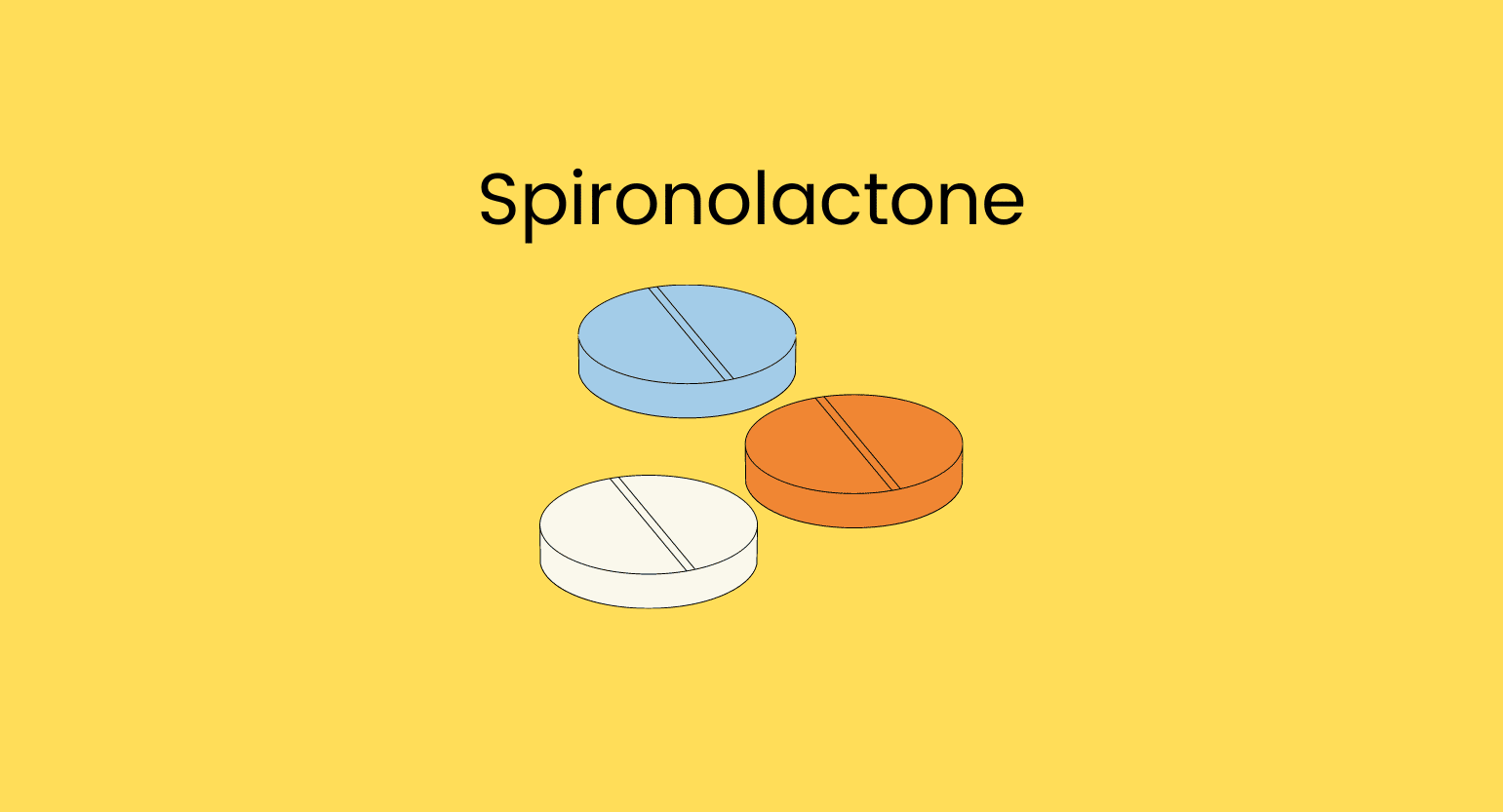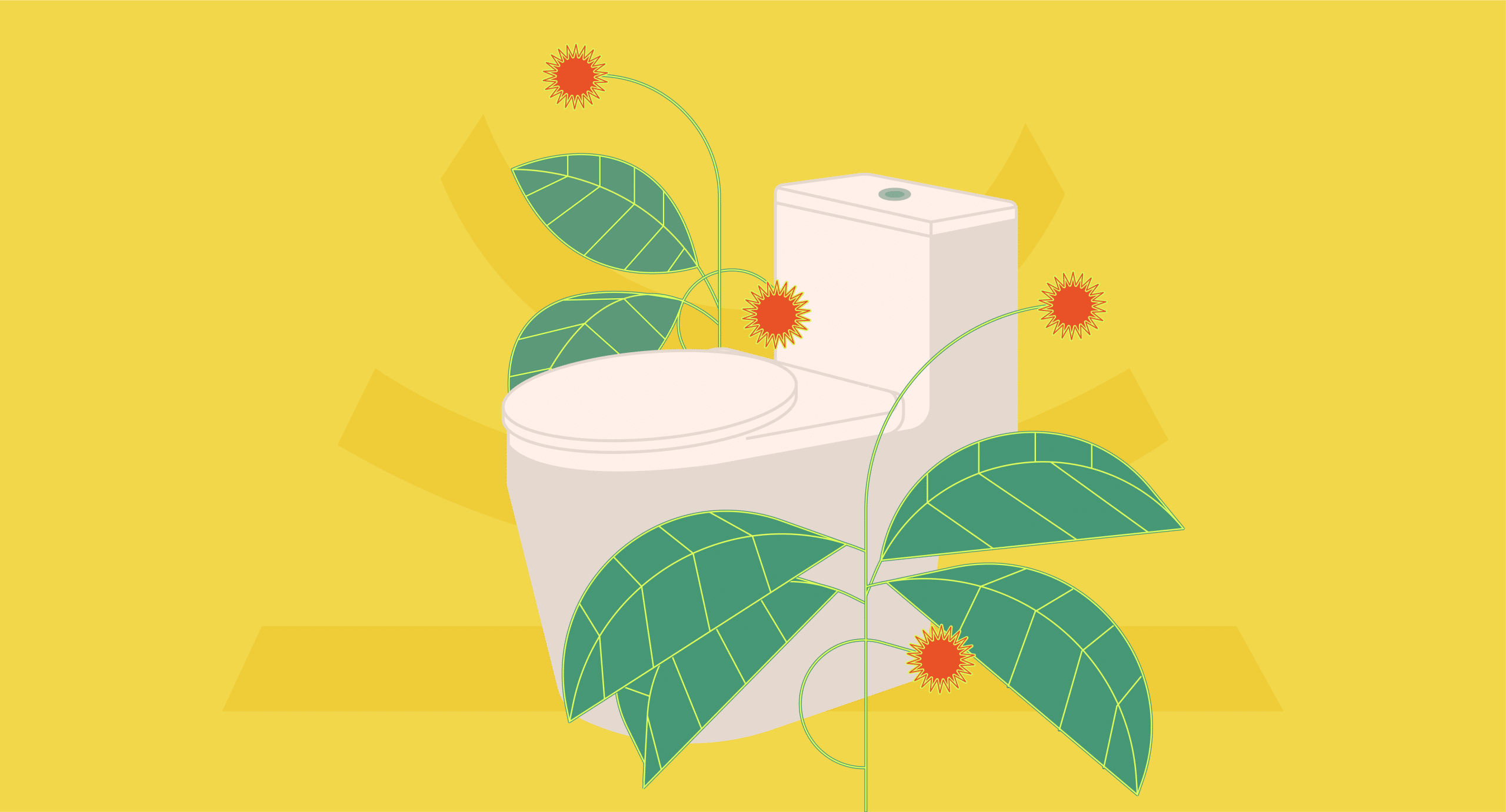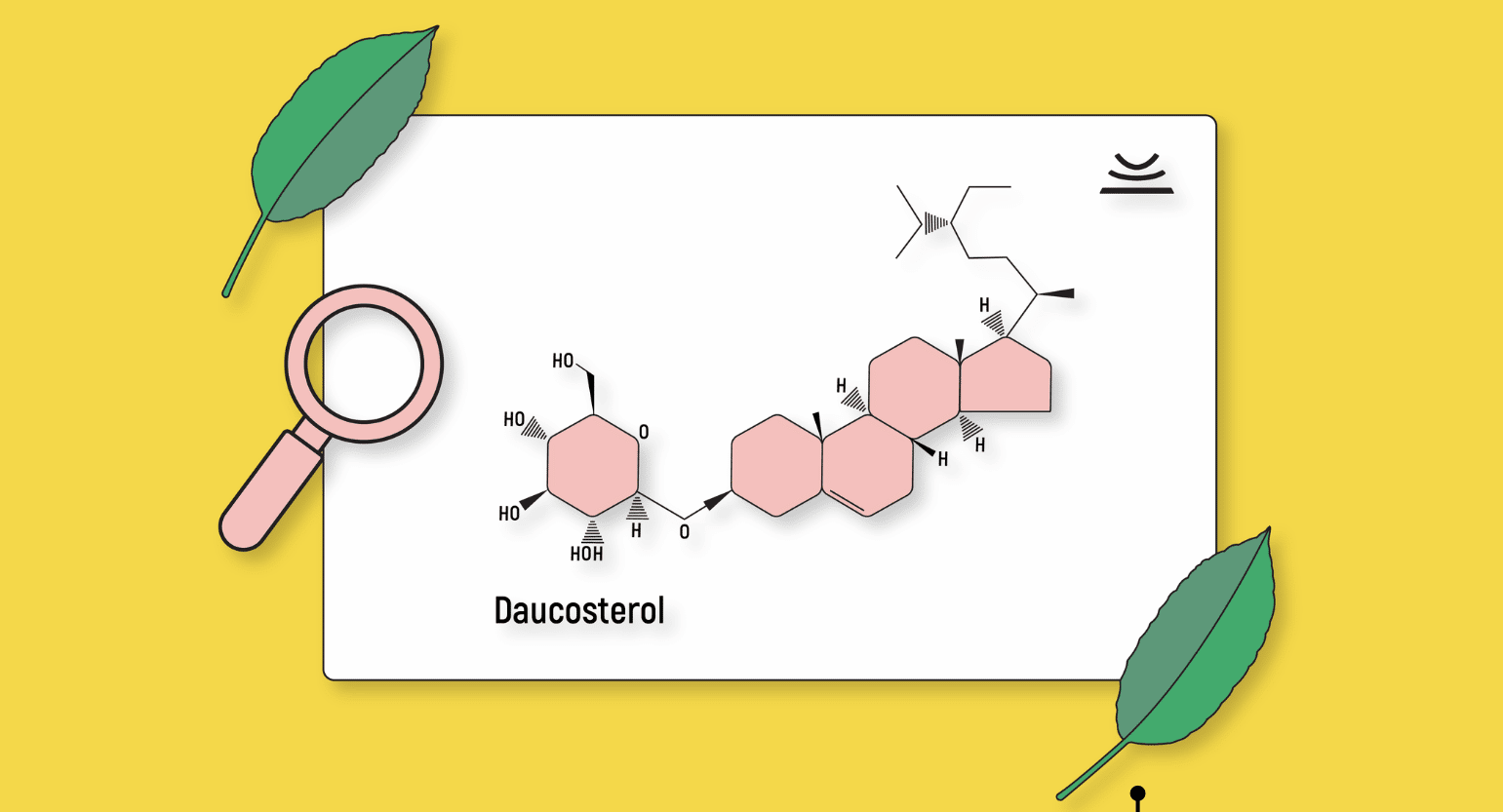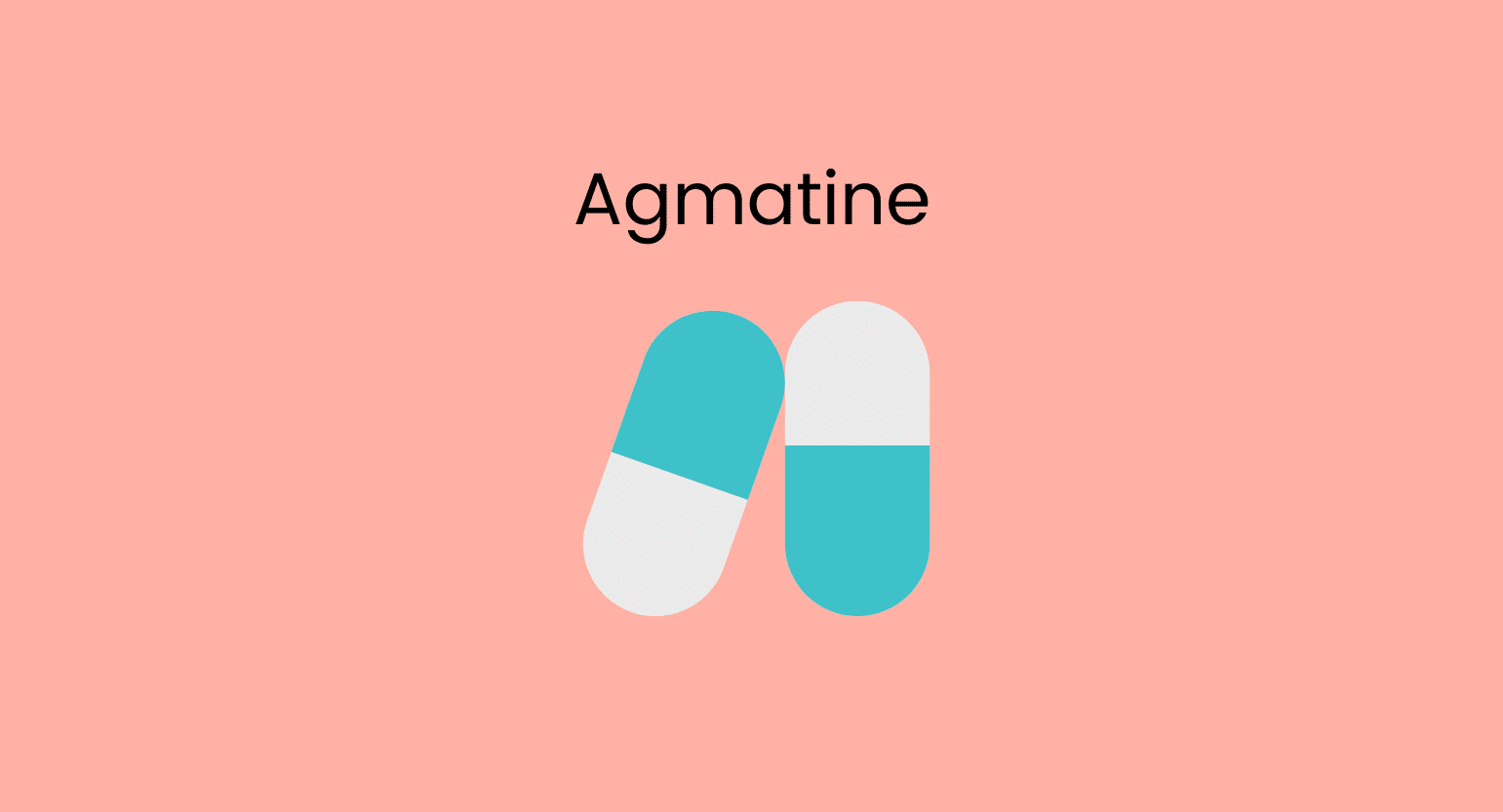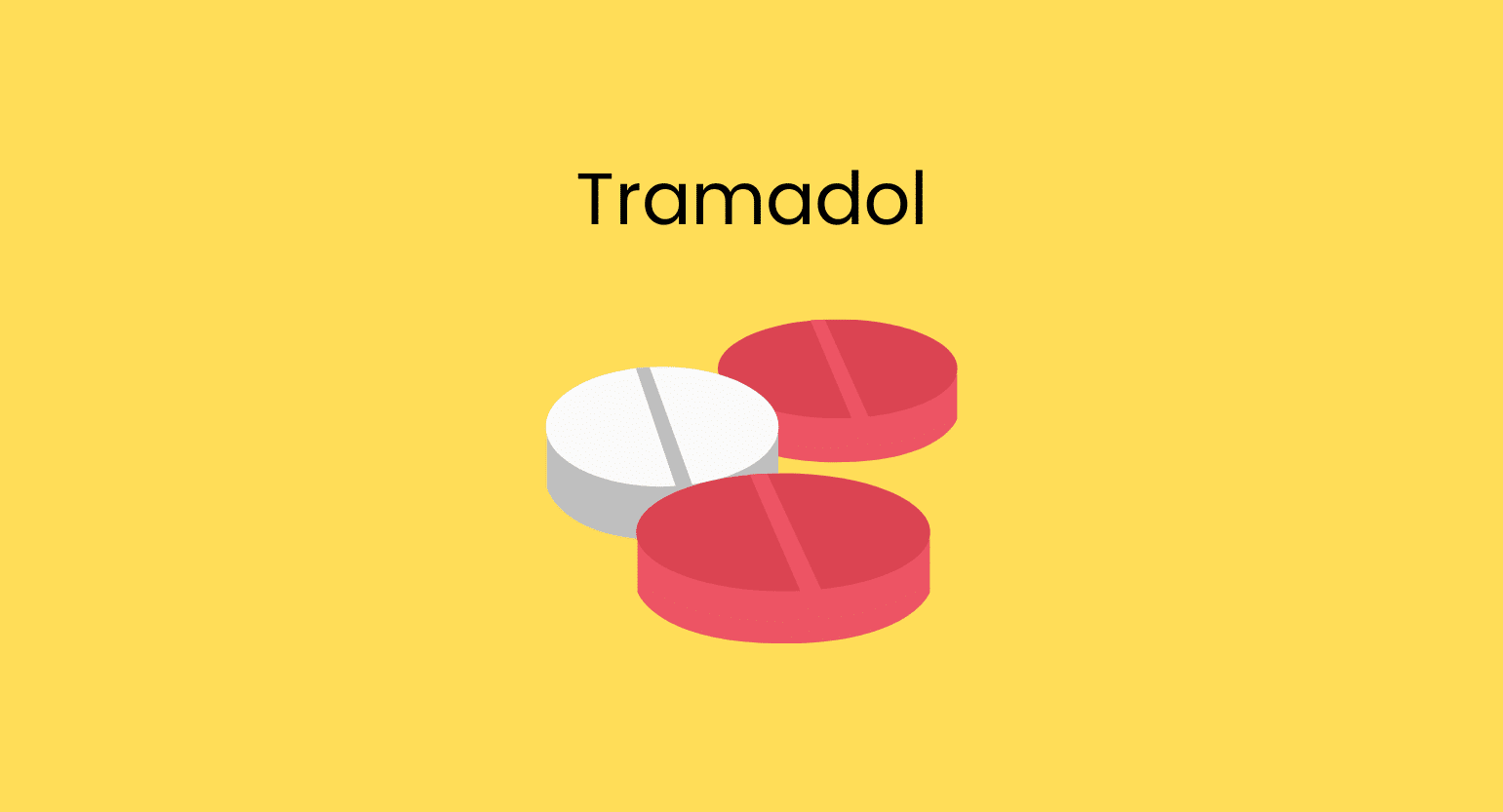Does Kratom Interact With Spironolactone (Aldactone)?
Yes, spironolactone and kratom can interact indirectly, which involves a moderate to severe risk of side effects.
This indirect interaction occurs because the compounds’ effects are opposite. Before taking kratom and spironolactone together, always consult your prescribing physician first.
The interaction of kratom with spironolactone can take two forms:
Kratom Can Decrease Spironolactone’s Effects (Antagonistic Interaction)
Kratom and spironolactone are considered antagonists. While low doses of kratom could help lower blood pressure, long-term intake of high doses could result in blood pressure rising, causing serious complications.
We consider two substances to have an antagonistic interaction if they have opposite effects on the body and might cancel each other out. These substances might have different mechanisms of action, but their effects counteract when taken together.
Kratom’s stimulating effects can affect the sympathetic nervous system, releasing substances like noradrenaline and adrenaline, causing an increase in blood pressure.
On the other hand, spironolactone acts through the competitive binding of receptors at the aldosterone-dependent sodium-potassium exchange site in the distal convoluted renal tubule. This causes potassium retention in the body and decreases blood pressure levels.
Because both medications have opposing effects, taking them together can be counterproductive, raising blood pressure and increasing problems.
Kratom Can Slow Down Spironolactone’s Elimination (Metabolic Competitor)
There is a chance of metabolic interaction between spironolactone and kratom. Most of the drugs we take are metabolized in the liver by an enzyme group known as “cytochrome P450” (CYP).
Spironolactone is metabolized by CYP3A4, CYP3A5, and CYP2C8 enzymes [1].
On the other hand, kratom is broken down by CYP3A4, CYP2D6, and CYP2C9 enzymes [2].
Because these two drugs are processed by the same CYP3A4 enzyme, taking them together may produce metabolic inhibition, slowing down their breakdown and disposal. Both medications could stay in the body longer and cause additional adverse effects.
If this happens, there could be extended periods of dehydration and, over time, can lead to longer retention of spironolactone in the body, causing dangerous side effects like renal failure.

Kratom & Diuretics Interactions
Spironolactone belongs to the class of aldosterone antagonists of the diuretics group. All diuretics increase the production of urine.
Several other diuretics share a similar level of risk when used alongside kratom.
Other diuretics that kratom will interact with include:
- Chlorthalidone (Hygroton)
- Chlorothiazide (Diuril)
- Hydrochlorothiazide (Esidrix, Hydrodiuril & Microzide)
- Indapamide (Lozol)
- Metolazone (Mykrox & Zaroxolyn)
- Amiloride hydrochloride (Midamar)
- Triamterene (Dyrenium)
- Furosemide (Lasix)
- Bumetanide (Bumex)
Is it Safe to Take Kratom With Spironolactone (Aldactone)?
No. It is not safe to take kratom with spironolactone.
Kratom and spironolactone’s interaction is considered moderate to severe.
Kratom can raise blood pressure, counteracting the benefits of diuretics and potentially leading to significant side effects, such as headaches, nausea, and vertigo. The retention of diuretics in the body can, later on, cause terrible side effects such as renal failure.
Kratom should only be used under the supervision of a medical professional because it has a high risk of interacting with diuretics like spironolactone.
As a result, visit your prescribing physician before using these medications. You should never start them on your own. Also, if you encounter any unusual side effects, contact your doctor immediately.

What is Spironolactone (Aldactone)?
Spironolactone is an aldosterone receptor antagonist and belongs to a class of drugs called diuretics [3]. It treats hypertension, hyperaldosteronism, edema from various causes, hirsutism, and hypokalemia.
It helps treat fluid retention caused by heart failure, liver damage, renal illness, high blood pressure, low blood potassium that doesn’t improve with supplements, early puberty in males, acne, excessive hair growth in women, and transgender hormone therapy.
Spironolactone inhibits sodium-potassium exchange channels in the distal convoluted tubule dependent on aldosterone. This effect causes higher potassium retention while increasing salt and water excretion. Water excretion is enhanced, which has diuretic and antihypertensive effects.
Spironolactone inhibits mineralocorticoid receptors in the distal convoluted tubule. This action promotes sodium and water excretion while keeping potassium in the body. When this receptor is inhibited, renin and aldosterone levels rise.
Because spironolactone is structurally identical to progesterone, it has progestogenic and antiandrogenic properties.
Spironolactone Specs
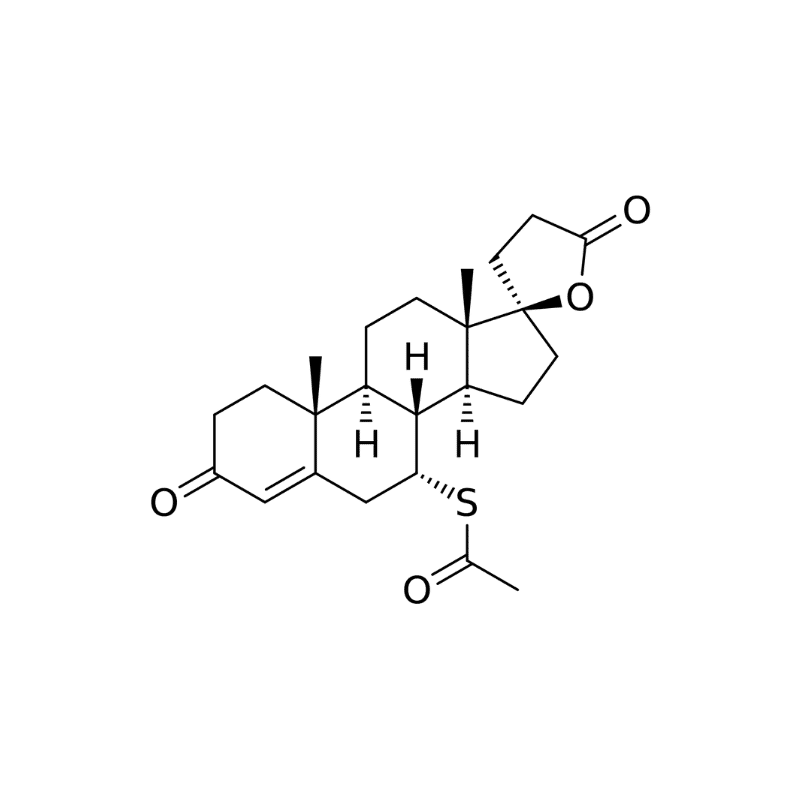
| Drug Name | Spironolactone |
| Trade Names | Aldactone, Aldactone-A, Berlactone, CaroSpir, Novo-Spiroton, Spiractin, Spiridon, Spirix, Spiroctan, Spirogamma, Spirohexal, Spirolon, Spirolone, Spiron, Spironolactone Actavis, Spironolactone Orion, Uractone, Uractonum, Verospiron, Vivitar |
| Classification | Aldosterone antagonist of diurectics |
| CYP Metabolism | CYP3A4, CYP3A5, and CYP2C8 |
| Interaction With Kratom | Antagonistic and metabolic competition |
| Risk of Interaction | Moderate to high |
What is Spironolactone (Aldactone) Used For?
Spironolactone has several indications. Some of these are:
Congestive Heart Failure
Spironolactone can help treat congestive heart failure and improve its symptoms [4].
Spironolactone counteracts the effects of aldosterone, resulting in less fibrosis and improved left ventricular (LV) function. It also decreases the risk of death and hospitalization and prevents worsening symptoms due to heart failure.
Spironolactone improves magnesium and potassium retention, increases myocardial norepinephrine absorption, reduces myocardial fibrosis, and lowers mortality from progressive ventricular failure and malignant ventricular arrhythmias. It can also reduce the risk of volume overload and decrease cardiovascular overwork.
Hypertension
Spironolactone also treats resistant hypertension [5].
Resistant hypertension is uncontrolled blood pressure despite using three antihypertensive drugs, including a diuretic. Hence, it is usually a fourth-line treatment.
Spironolactone works on the distal convoluted tubules by competitively inhibiting aldosterone-dependent sodium-potassium exchange channels. This effect causes higher potassium retention while increasing salt and water excretion. Water excretion is enhanced, which has diuretic and antihypertensive effects.

Polycystic Ovarian Disease
Spironolactone is a mineralocorticoid receptor antagonist with antiandrogenic properties. Women with polycystic ovary syndrome (PCOS), in which excess androgens cause monthly irregularities, hirsutism, and infertility, may benefit from these antiandrogenic effects.
A study showed that using spironolactone in combination with metformin reduced symptoms of polycystic ovarian disease significantly [6].
Skin and Hair Conditions
Spironolactone treats female acne, hair loss in women, hidradenitis suppurativa, and hirsutism [7].
The reasoning for this is based on spironolactone’s mode of action, which interferes with hormone-controlled sebum and sweat gland secretion, as well as androgen-stimulated hair growth.
Transgender Hormone Therapy
Spironolactone is used in feminizing hormone therapy.
It inhibits testosterone production by blocking male sex hormone (androgen) receptors. Reduced male pattern body hair, breast development induction, feminization in general, and the lack of spontaneous erections are some of the other clinical consequences. This is generally an off-label treatment process [8].

What’s the Dose of Spironolactone?
The recommended dose of spironolactone is 25 – 100mg orally per day. The dose may be adjusted according to the condition [3].
Generic & Brand Name Versions
You can find spironolactone in the market under the following brand names:
- Aldactone-A
- Berlactone
- CaroSpir
- Novo-Spiroton
- Spiractin
- Spiridon
- Spirix
- Spiroctan
- Spirogamma
- Spirohexal
- Spirolon
- Spirolone
- Spiron
- Spironolactone Actavis
- Spironolactone Orion
- Uractone
- Uractonum
- Verospiron
- Vivitar
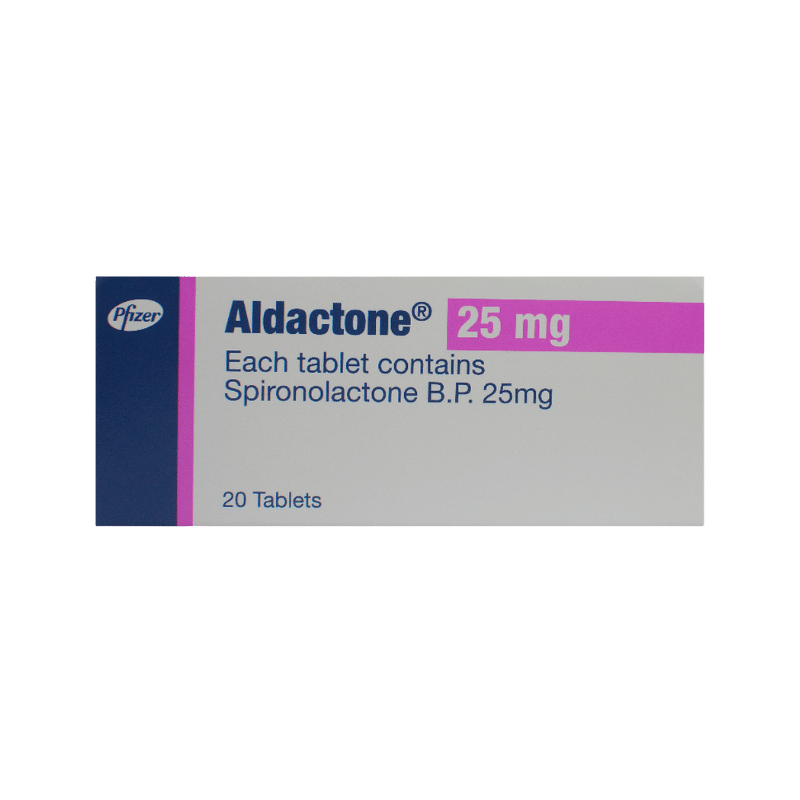
What Are the Side Effects of Spironolactone?
Like all medications, spironolactone can cause side effects. Some common side effects of spironolactone include:
- Abdominal cramping
- Alopecia
- Allergic reactions
- Ataxia
- Breast and nipple pain
- Chloasma
- Decreased libido
- Diarrhea
- Dizziness
- Drowsiness
- Drug rash with eosinophilia and systemic symptoms (DRESS)
- Electrolyte disturbances
- Erectile dysfunctions
- Fever
- Gastric bleeding
- Gastritis
- Gynecomastia
- Headache
- Hyperkalemia
- Hyponatremia
- Hypovolemia
- Impotence
- Leg cramps
- Lethargy
- Leukopenia
- Maculopapular or erythematous cutaneous eruptions
- Menstrual disorders
- Mental confusion
- Nausea
- Postmenopausal bleeding
- Pruritus
- Rash
- Renal dysfunction (including renal failure)
- Stevens-Johnson syndrome
- Thrombocytopenia
- Toxic epidermal necrolysis
- Ulceration
- Urticaria
- Vasculitis
- Vomiting
Spironolactone is not for use in pregnant and breastfeeding women. In those with renal and liver failure, the dosage must be adjusted as needed.
What is Kratom?
Kratom is a Southeast Asian herbal extract derived from the Mitragyna speciosa tree.
The plant’s alkaloids are responsible for kratom’s health benefits and interact with many organic systems. Two, in particular, mitragynine and 7-hydroxymitragynine, have properties similar to opioids. Because of kratom’s many benefits, it was a medicinal household staple for centuries.
In small doses, kratom acts as a stimulant. In large amounts, it has sedative qualities — this unique trait makes it essential for users to know how kratom works.
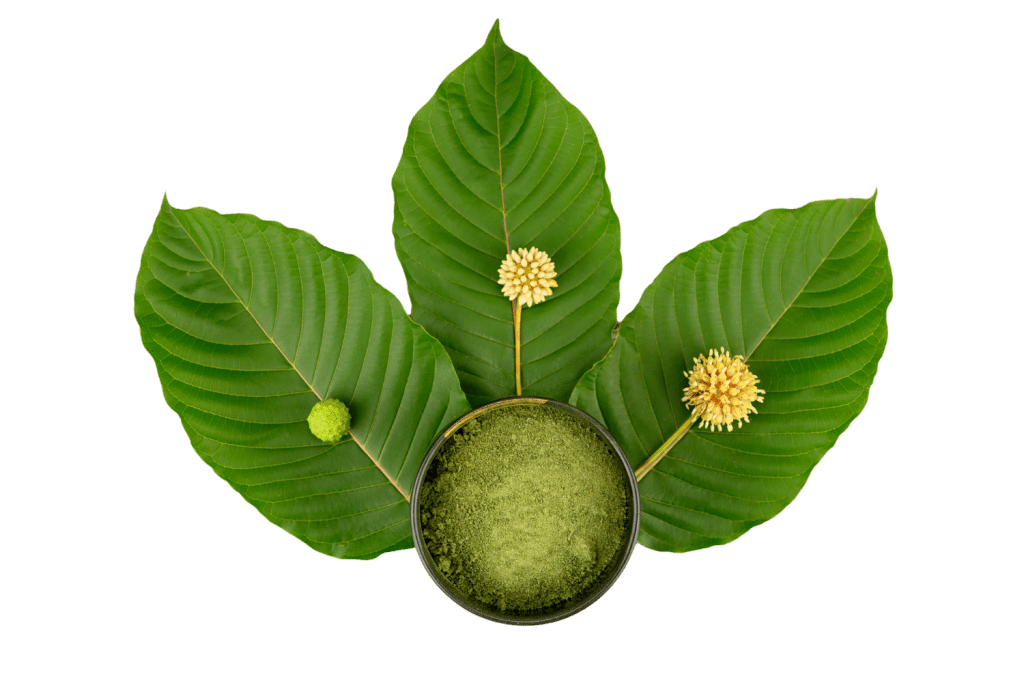
What’s Kratom Used For?
Indigenous people in countries like Vietnam, Thailand, and Indonesia have used kratom for centuries as a traditional medicine to combat fatigue and relieve pain.
Nowadays, kratom has a wide variety of accepted uses:
- ADHD (Attention Deficit & Hyperactivity Disorder)
- Addiction to opioids and withdrawal symptoms
- Arthritis pain
- Anxiety
- Boost of energy
- Chronic back pain
- Depression
- Fibromyalgia
- Improved mood
- Migraines
- Muscle pain
- Pain
- Psoriatic arthritis
What is the Dose of Kratom?
As we mentioned, the effects depend on the amount (and strain) used, so it’s essential to know where to start.
If you want stimulation, a boost in mood, focus, and creativity, use smaller amounts — usually between 2-5 g.
Using kratom for pain relief, anxiety, or insomnia will take larger doses — around 5-8 g.
The average user sticks with 2-8 g, but it’s also possible to microdose, and some people require larger amounts, though it’s best not to go over 12 g.
Check out our guidelines and calculator for a more detailed look at dosage.
Caution: Measuring kratom by volume is less accurate than weight. Use a scale.
What Are the Side Effects of Kratom?
Misconceptions cause some people to fear kratom; it’s safe when used correctly. There are some side effects to be aware of, but these are more common in larger doses and long-term use. Serious side effects are infrequent.
- Abnormal heart rhythms
- Anxiety
- Constipation
- Drowsiness
- Dry mouth
- Frequent urination
- Headaches
- Irritability
- Itching
- Liver damage
- Loss of appetite
- Nausea
- Vomiting
- Withdrawal symptoms with long-term use
Kratom addiction is a real issue, but it doesn’t have to be. If you know the signs of addiction and take breaks from it, it’s easy to avoid.

What Are the Different Types of Kratom?
Kratom strains are simply variations of the plant. The growing and harvesting process determines the alkaloid content, which changes the primary effects.
While every kratom strain tends to be stimulating in small amounts and sedating in larger amounts, certain kinds excel at one or the other.
We’ll explain what each one does best.

White Vein Kratom
Effective as a mood enhancer and an energy booster, white vein kratom can even help increase attention and raise levels of cognition with regular use. These strains are best for energy, depression, focus, and mood.

Red Vein Kratom
The analgesic effects of red vein kratom make it effective in treating chronic pain. It has a calming effect on the mind and can help lower anxiety attacks and help the user sleep better.

Green Vein Kratom
The dosing of green vein kratom decides whether it will work as a stimulant or a sedative. Green strains are the most versatile and balanced — perfect for providing a little bit of everything for those that don’t need anything substantial.

Yellow Vein Kratom
The smoother and more relaxing properties of yellow vein kratom are from the fermented form of green vein kratom. This makes it an excellent measure to treat anxiety and help calm the mind.

Key Takeaways: Is it Safe to Mix Kratom & Spironolactone (Aldactone)?
This combination is anything but safe. Kratom and spironolactone can have a moderate to a high level of interaction. These two are considered antagonists, with spironolactone decreasing blood pressure and kratom increasing it. Taking them together could impair spironolactone’s effects, and the user may experience spikes in their blood pressure.
Besides this, spironolactone’s metabolism may be inhibited by kratom, increasing serum blood levels. Diuretic drugs that become overly concentrated can harm the liver or kidneys.
Don’t start taking these medications without first consulting your prescribing physician.
- Carospir Label – Food and Drug Administration. (n.d.). Retrieved January 3, 2023, from https://www.accessdata.fda.gov/drugsatfda_docs/label/2021/214622s000lbl.pdf
- Kamble, S. H., Sharma, A., King, T. I., León, F., McCurdy, C. R., & Avery, B. A. (2019). Metabolite profiling and identification of enzymes responsible for the metabolism of mitragynine, the major alkaloid of Mitragyna speciosa (kratom). Xenobiotica, 49(11), 1279-1288.
- Patibandla, S., Heaton, J., & Kyaw, H. (2022). Spironolactone.[Updated 2022 Jul 4]. StatPearls [Internet]. Treasure Island (FL): StatPearls Publishing.
- Soberman, J. E., & Weber, K. T. (2000). Spironolactone in congestive heart failure. Current hypertension reports, 2(5), 451-456.
- Attar, A., Sadeghi, A. A., Amirmoezi, F., & Aghasadeghi, K. (2018). Low dose spironolactone monotherapy in the management of stage I essential hypertension: a pilot randomized, double-blind, placebo-controlled trial. Acta Cardiologica Sinica, 34(1), 59.
- Diri, H., Karaburgu, S., Acmaz, B., Unluhizarci, K., Tanriverdi, F., Karaca, Z., & Kelestimur, F. (2016). Comparison of spironolactone and spironolactone plus metformin in the treatment of polycystic ovary syndrome. Gynecological Endocrinology, 32(1), 42-45.
- Salavastru, C. M., Fritz, K., & Tiplica, G. S. (2013). Spironolactone in dermatological treatment. On and off label indications. Der Hautarzt; Zeitschrift fur Dermatologie, Venerologie, und Verwandte Gebiete, 64(10), 762-767.
- Prior, J. C., Vigna, Y. M., & Watson, D. (1989). Spironolactone with physiological female steroids for presurgical therapy of male-to-female transsexualism. Archives of Sexual Behavior, 18(1), 49-57.

